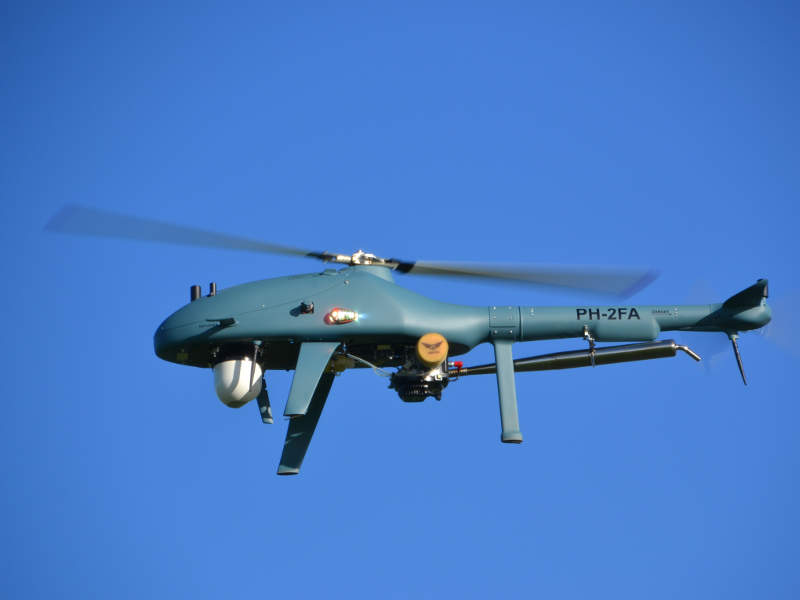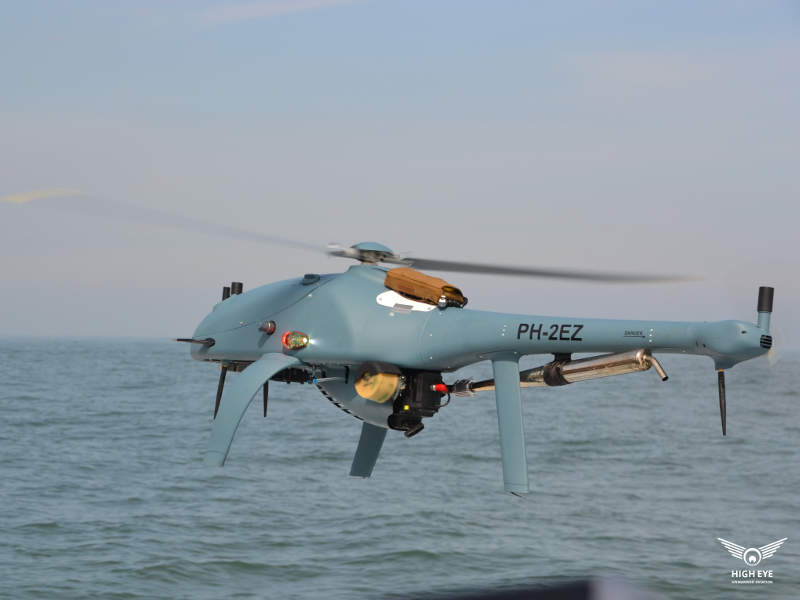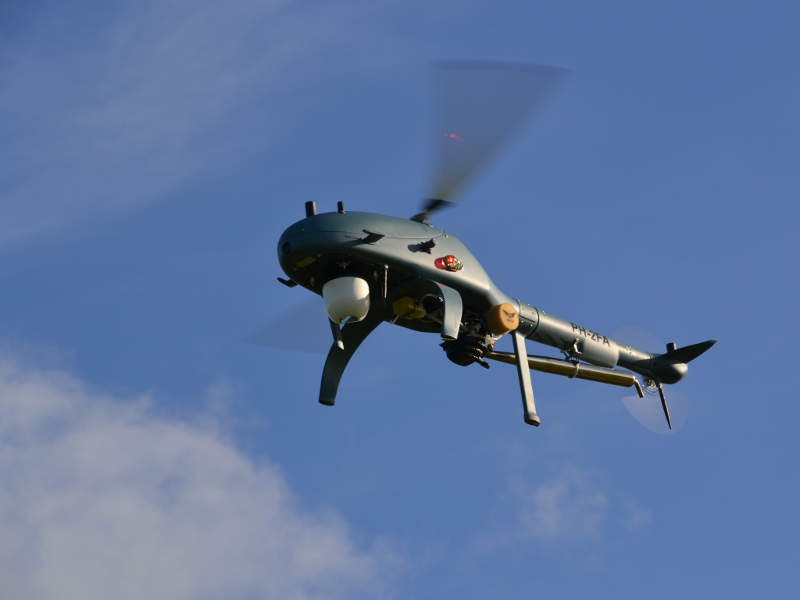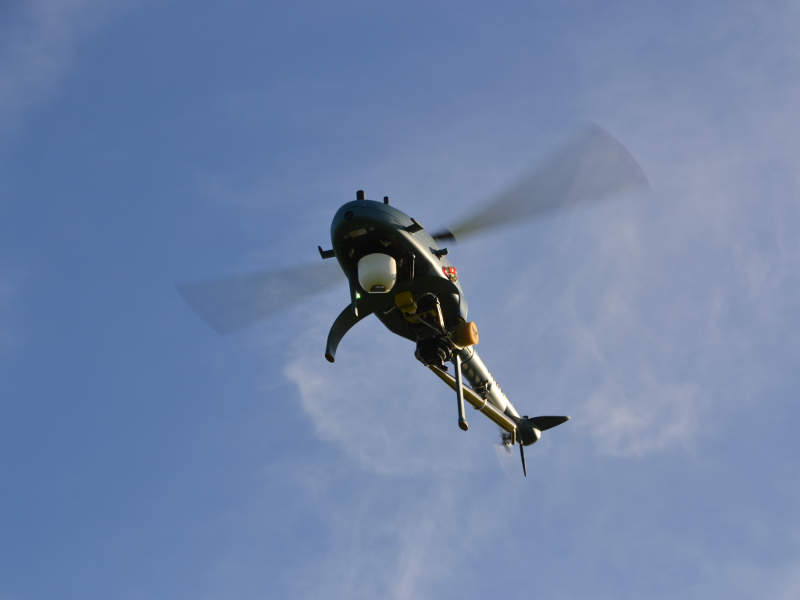HEF 32 is a new vertical take-off and landing (VTOL) unmanned aerial system (UAS) designed and manufactured by High Eye Unmanned Aviation, an unmanned aerial vehicle developer based in the Netherlands.
The UAS is designed primarily to address the maritime requirements of navies, coastguards, armies and commercial operators across the world. It can be used to perform research, inspection, safety and security, and beyond visual line of sight (BVLOS) applications.
The HEF 32 unmanned aircraft was exhibited at the Euronaval 2018 international maritime and naval defence exhibition held in Paris, France, in October 2018.
The unmanned aerial vehicle (UAV) successfully demonstrated its mission capabilities during the flight tests conducted by the manufacturer in April 2018. The tests were carried out on a small seagoing vessel chartered by High Eye.
HEF 32 unmanned helicopter design and features
The HEF 32 system integrates an unmanned aircraft and ground control station (GCS). The aircraft features a modular design layout with vertical take-off and landing capability. The airframe is reinforced using pre-preg carbon fibre materials.
The VTOL aircraft is equipped with a twin-bladed head and tail rotors. Its corrosion-resistant rotors, frame parts, transmission and flight control systems are made of aluminium and steel alloys.
The helicopter has a length of 1.75m and height of 0.59m. Its maximum take-off weight is 21.5kg and maximum payload capacity is 5kg.
The underfuselage is fitted with a fixed tricycle landing gear, which enables it to take-off from small vessels and unprepared strips. The UAV can be carried to mission locations using a transportation box.
Certified under IP-67 environmental protection rating, the UAV is designed to operate under high humid conditions. It complies with the MIL-STD-461F-RS103 MIL standard and eliminates the threat posed by radiated susceptibility.
Operators can use the UAV near high-power radiated energy sources, such as naval vessels.
Payloads and communications
The HEF-32 VTOL aircraft offers a dedicated payload bay and mounting plate to integrate a wide variety of payloads. It can carry electro-optical (EO) / infrared (IR) / laser-stabilised gimbals, LiDAR systems, magnetometers, radio-spectrum analysers, wideband antennae, radio-frequency detection devices, automatic identification system (AIS) transceivers, and radio communication relay equipment.
Other payloads, such as the laser rangefinder, IR imagery equipment and laser target designator, can also be integrated.
The UAV also features a proprietary autopilot system integrating two sets of central processing units (CPUs) and three inertial measurement units (IMUs). The autopilot system ensures semi- and fully-automatic operations with emergency modes for operations in GPS-denied environments.
Communication between the helicopter and GCS is supported by a ground-based omnidirectional antenna system with multiple-input and multiple-output capability. It facilitates communication between the control station and UAV within a range of 50km at a data rate of more than 5Mbps.
Ground control station of HEF-32
The operations performed by the unmanned helicopter are controlled from a man-portable GCS. The control system includes a new-generation laptop, external connectivity devices and vest carrier.
The UAV can be operated in both semi-automatic and manual flight modes using the flight control joystick. The flight can be terminated in emergency situations using the guarded switches on board. The GCS uses an integral IP module to share payload data to other computers.
Propulsion and performance
HEF 32 VTOL aircraft is equipped with a two-stroke 32cc air-cooled petrol engine. It features custom-built induction and exhaust systems to meet its operational requirements.
The engine receives fuel from a 5l fuel tank through a simple gravity-feed system. A fuel pump is used to consolidate the fuel storage capacity of the helicopter.
Auxiliary power requirements of the unmanned helicopter are served by the on-board battery setup and a 300W brushless alternator system.
Maximum speed and maximum indicated endurance speeds of the UAV are 130km/h and 56km/h, respectively. The maximum range is 220km, while the datalink-based maximum range is 50km.
The HEF 32 unmanned aerial system can continuously perform missions for more than four hours at sea level, while it can perform operations at a maximum altitude of 2,500m.






